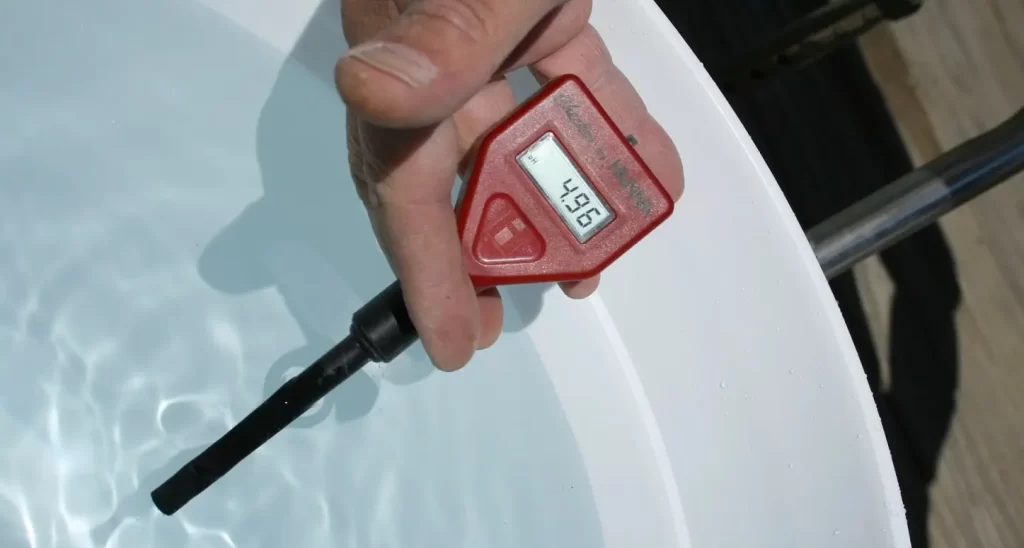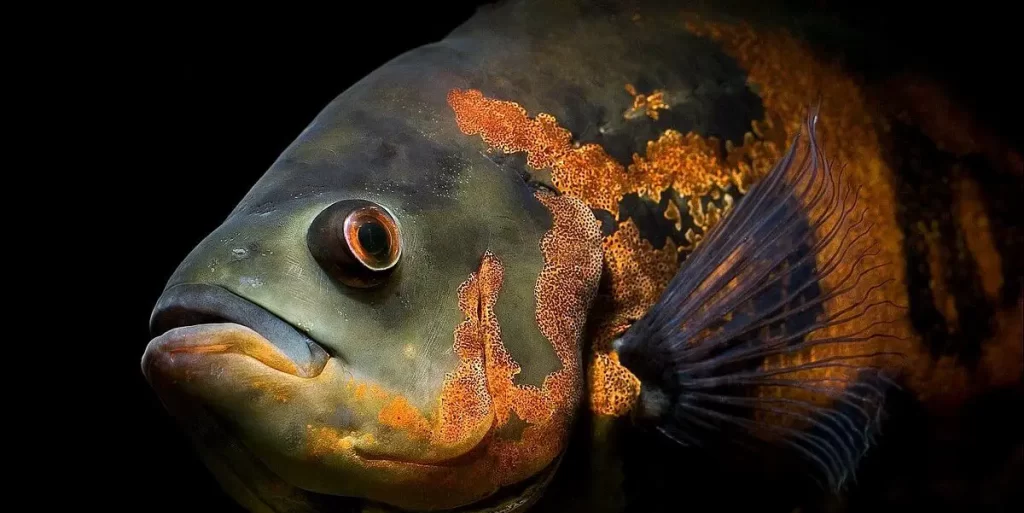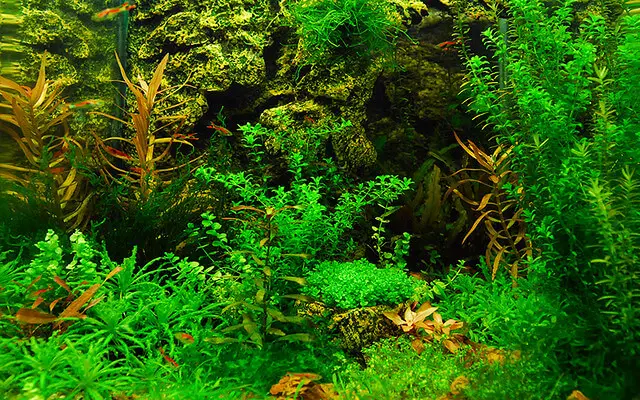The saltwater aquarium will consist of marine aquatic animals and plants. You can find many aquarists drawn to the saltwater aquarium because of the wide range of possibilities to play within this tank. In this tank, you can create your reef as well. One of the many issues saltwater aquarist faces is that it’s really hard to lower pH level in saltwater Aquarium. In this article, we will be discussing on how to lower the pH level in saltwater Aquarium.
Yes, the common belief is that saltwater tanks are expensive and hard to manage. However, with proper dedication and time, even the beginner fish keepers will be able to care for them with ease.
If you are aware of the aquarium setup, you must know about maintaining the different water parameter levels in a tank. Without preserving these factors, you cannot create a good tank environment for your fish. These water parameters include guarding temperature, pH level, hardness, nitrate level, etc.
One of the parameters that concern the aquarists is the pH level. It does not matter if you have a freshwater or saltwater aquarium. If you are no able to conserve the pH level, then your aquarium fish will not be happy in their environment.
In the case of a saltwater tank, there are fish that go in a reef tank. These species heavily depend on the stable pH level condition. You should maintain a certain pH level constantly at any cost.
I will be explaining all the details to ensure that your pH level does not spike unnecessarily. Keep reading for further information.
A basic introduction to the pH
pH is a simple measurement of the acidity or alkalinity of a solution. In our case, the pH measures the acidity or alkalinity of our saltwater aquarium. The measurement ranges from 0 to 14, where 7 is the neutral point. The pH below this point is acidic, and above is basic. For instance, let us consider the pH level 5. This pH level is said to be ten times more acidic than the pH level 6.
The water we have in the aquarium have chemicals dissolved, hence the water changes to acidic or alkaline. Therefore, this is the reason the aquarium saltwater is different from pure water. The pure water will always be neutral.
Different water parameters, such as carbonate hardness, affect the pH level (KH) and the general hardness of the water (GH). It mainly measures the number of free hydrogen ions available in the solution.
The variations in the pH level mostly affect different fish, as they are completely immersed in the water. If the pH level fluctuates a lot inside the tank, it will be very deadly for the fish. Hence, even though the fish can be hardy, you need to be careful while altering or maintaining the pH level.
The pH level for saltwater aquarium
For a saltwater aquarium, you can have three different tank options. You can keep the fish only tank, fish only with live rock (FOWLR) tank or reef tank.
The fish only tank, as the name suggests, is for people who want nothing but the fish in their tank. This is one of the least expensive and simple forms of a saltwater aquarium.
As the fish only tank is not the most effortless to deal with, it will be better if you can keep live rocks in the tank. The live rocks will help to increase the good bacteria in the tank as well as helps to improve the tank cycle.
If you want your tank ecosystem to be alluring, then you can add corals in your tank. Maintaining a coral reef tank is a challenge for beginners. Also, these tanks are quite expensive as well.
Now, the pH level for general fish only tank or fish only with live rock is similar. These tanks should have a pH level within the range of 7.6 to 8.4. When you want a coral present in your tank, it is not the same. In that case, you need a pH range of 8.0 to 8.4.
Likewise, the pH level of your tank will also depend on the species you are housing. You need to know about different species, corals, invertebrates that you have in your tank to regulate the best pH level for the tank.
Causes of changes in the pH level in the tank
The common drift regarding the pH in your saltwater tank is that the pH lowers with time. Due to the developments of various acidic build-ups in the tank, the pH tends to drop.
Some of the primary sources of the acidic nature of the water are excess carbon dioxide (Co2), nitric acid, organic acids, etc. The carbon dioxide develops because of the lack of sufficient exchange of gas. From the biological filtration, nitric acid develops with the process of nitrification. Moreover, due to the metabolic wastes, there will be an increase in organic acids.
The saltwater pH level does not fluctuate drastically because the water contains many chemicals such as bicarbonate, calcium, carbonate, borate, and hydroxide. All these chemicals act as natural buffers. The buffers in the saltwater determine the alkalinity and protect against the changes in the pH level.
However, after some time, these buffers may wear out and, which will be the leading cause of pH fluctuations in the tank.
Lowering the pH level in the saltwater tank
As you may already know, lowering the pH level in the saltwater tank means acidifying the water. You will be able to achieve this by softening the water.
Through Reverse Osmosis
You need to first test the natural pH level and the hardness of the water in your area. This is because; lowering the pH level is much more complicated than increasing the pH level. If you have access to the Reverse Osmosis (RO) water, then you can use it to lower the pH level.
RO is the process of water purification that removes the ions, unwanted molecules, and larger particles in the drinking water. This process also helps to remove many types of dissolved and suspended chemical species.
Therefore, using the RO process for water changes can reduce the overall pH of the water.
Filtration through Peat Moss
Peat moss is a large absorbent dead fibrous material, which is formed when mosses and other living materials decompose. This is one of the widely used strategies, which helps to reduce the tank’s pH level.
Hence, you can use the peat moss in your substrates, or you can also let your water stand on a tank with peat moss for a couple of weeks. By doing this, you will find the pH level getting lower in the tank.
The peat moss will be able to release carbon dioxide and nitrates into the tank, which will help to make your water more acidic. However, this is a temporary process as once you stop using the peat moss, the water pH parameter will rise again. This will mainly happen when your tap water is hard.
Using carbon dioxide injectors
The main things that you will require when you want to inject the CO2 in your tank are the CO2 itself, a regulator, a solenoid, a bubble counter, diffuser, tubes, etc.
When you bubble the carbon dioxide in the tank, you will break the CO2 into carbonic acid. The carbonic acid then helps to lower the pH level of the tank. In a planted aquarium, this is very desirable as aquatic plants thrive in the presence of CO2. It also helps prevent the development of algae.
Yet, this process is not a permanent solution as well. You will need to maintain it until you do not get the desired pH level. The pH level will increase once carbon dioxide ceases. This also proves that it is a rather expensive process, as well.
Adding Driftwoods
There can be developments of different pollutants and toxic chemicals in the tank over time. This one of the reason is the rise of the pH level.
From all the methods, a simpler method to reduce the pH level in the tank is to add driftwoods in your tank. Adding driftwoods will not only filter out the impurities and contaminations from the tank but also reduces the pH level of your tank.
The only thing that you should keep in mind is that driftwood may cause your tank water to become a little tinted. You can see wood altering the color of your tank. If this happens, you do not need to worry. You can first soak the woods in some water rather than directly inserting it into your container.
In addition, make sure that you do not get driftwoods that are meant for reptiles as it may contain chemicals that are toxic to the fish.
Using pH buffers

Most of the saltwater aquarium owners manage without using the pH buffers. This is one of the drastic measures, which you can take while stabilizing your pH level. The buffers are a kind of chemical that helps to regulate the pH level. Buffering lowers the risk of drastic fluctuations in the pH level of your tank, causing less damage to your fish.
Thus, you can use pH buffers as an additive to lower the pH level in the case of an emergency. This process also will not help you in the long term, as it will not keep your pH level down.
Once you stop using the buffers, it might end up raising the pH level severely, which may harm and disturb your tank environment.
Conclusion
You will have to be very careful, particularly when managing the pH level of your tank. The pH level is the most critical part of any aquarium environment. Your fish will be able to tolerate a few minor changes in the pH level. However, harsh and radical change will not do your fish any good.
From this article, I hope that you have gained some perspective on how you can alter the pH level without affecting your aquarium life. I also recommend that you need to carry out these processes only if you have to. Otherwise, you do not need to disturb your fish unnecessarily.
Finally, I would like to conclude by saying that these processes can take some time to give results. Alternatively, you may be able to see very few changes only. On the other hand, once you stop this process, you can see the pH level rising. Therefore, you need to monitor and be patient while lowering the pH level of your tank.
You can check our other articles as well on Fish Keeping Guide.
Reference
Image Credit: https://commons.wikimedia.org/wiki/File:2009-03-30_Red_pH_meter_reads_4.96.webp






